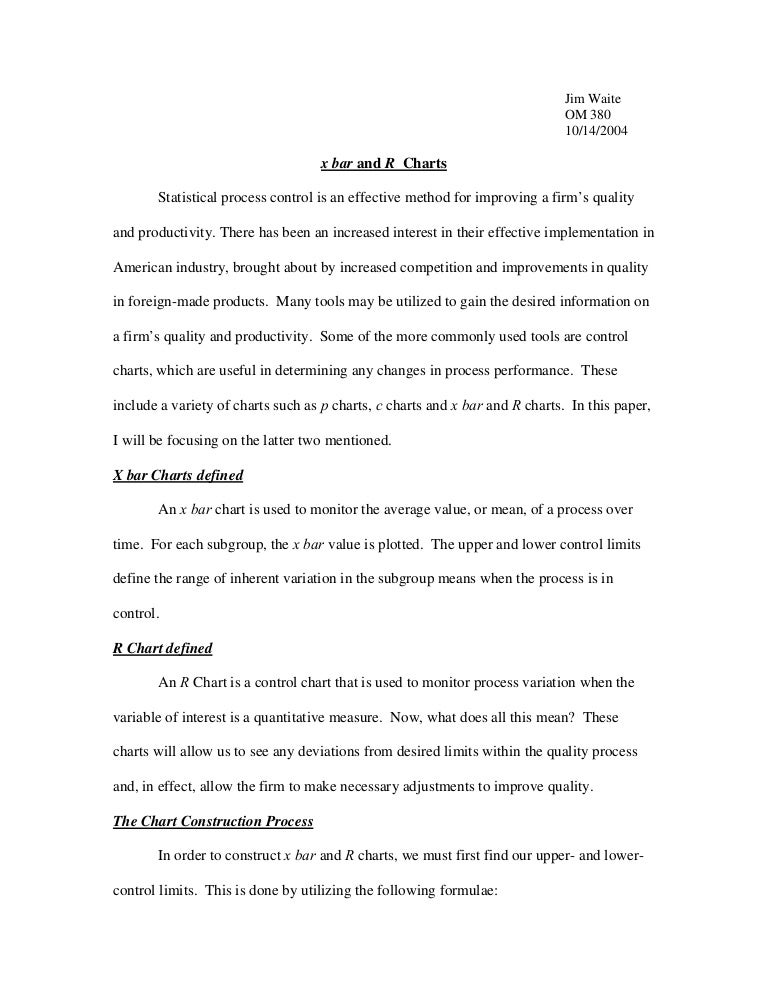

The X chart examines the variation between subgroups.The range chart examines the variation within a subgroup.

The classical X-R control chart is designed to look at two types of variation:
#Xbar r chart example how to
We will then look at how to handle these types of situations by using three control charts. You will see that the control limits on the X chart are very tight and most of the points on that chart are beyond the control limits. We then take a look at what the X-R control charts often looks like when you have situation where there is a significant difference between the within-subgroup variation the between-subgroup variation. We start with a brief review of X-R charts. This month's newsletter takes a look at how to address situations with control charts where the within-subgroup variation is significantly different from the between-subgroup variation.

But what happens when the process is such that it is not possible for the short-term variation to be consistent with the long-term variation? The long-term variation is given by the between subgroup variation on the X chart. If you are using an X-R chart, the short-term variation is given by the within-subgroup variation on the range chart. But it also means that the short-term variation is consistent with long-term variation. What does it mean when a control chart indicates that a process is in statistical control? It means it is consistent and predictable - you can predict what the process will do in the near future. Control charts are really a study in variation.


 0 kommentar(er)
0 kommentar(er)
